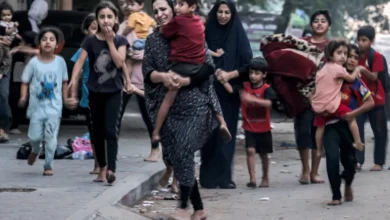Not everyone has the luxury to ditch ‘harmful’ gas stoves
Edna Odhiambo

Edna Odhiambo
Is your gas stove killing you and our planet slowly? Recently, a series of studies raised the alarm about the negative health and environmental effects of this commonly used cooking appliance. They linked gas stoves to an increased risk of illnesses, such as childhood asthma, and revealed that they contribute to the climate crisis by releasing significant amounts of heat-trapping gasses, such as methane and nitrogen dioxide.
So should we all bin our gas stoves and find alternative ways of cooking?Well, context is everything.
First, while the studies that made headlines are undoubtedly worthy of attention, the science on gas stoves is far from settled. Other factors, such as exposure to outdoor air pollution from transportation, also increase asthma rates. And it is still unclear if the emissions from gas stoves are significant enough to contribute to climate change compared with those from heating homes and water.
Second, healthier and more environmentally friendly alternatives to gas stoves are not immediately accessible to many in the global majority – indeed, for billions of people in Africa and Asia, gas stoves are as clean as cooking will get, at least in the near term.
In the United States, only 38 percent of households use gas stoves, with most others already relying on electricity for cooking. And with near universal electricity access in most of the country, individual states and federal agencies have the luxury of considering restrictions or even blanket bans on gas cookers on health and environmental grounds.This, however, is not the case for much of the world.
Globally, an estimated 2.8 billion people, making up a third of the population, still use the dirtiest fuels for cooking, such as firewood, charcoal, coal, dung, crop waste and kerosene.
In Asia, two billion people, comprising 44 percent of the population, use these unclean fuels for cooking. Meanwhile, 19 of the 20 countries with the lowest access rates to clean cooking are in Africa. In 2020, 923 million people in the continent used dirty fuels for cooking – that is nine out of 10 people in sub-Saharan Africa, the only region globally where those without access to clean fuels are increasing. If the status quo in sub-Saharan Africa fails to change in the near future, with the expected population increase, 1.1 billion Africans in 2030 will be choking in their kitchens.
The human cost of dirty cooking is very high. Household air pollution was responsible for an estimated 3.2 million deaths in 2020, including more than 237,000 deaths of children under five. Heart disease, stroke and lower respiratory infection are leading causes of death from household air pollution. Inflammation of the airways and lungs, diminished immune responses and reduced oxygen-carrying capacity of the blood cause these illnesses. Women (and the children they care for) bear the heaviest burden, because they tend to do most of the cooking and spend more time in the home.The environmental impact of dirty cooking is equally devastating. Burning dirty cooking fuels produces harmful fumes and the use of firewood accelerates deforestation. As a result, dirty cooking produces two percent of global carbon emissions – a contribution comparable to that of the airline industry. Dirty cooking is a vicious cycle; cutting down trees reduces soil health which affects agricultural yields, exposing the same communities to increased food insecurity and malnutrition.There are tremendous efforts to help shift the majority of the world’s population to clean(er) cooking methods such as gas in the form of Liquified Petroleum Gas (LPG), Piped Natural Gas and biogas; alcohol such as bioethanol, and electricity. Among these, gas stoves are currently the most economically viable and scalable option in many countries. Despite the fact that LPG and PNG being derived from fossil fuels harms the climate, for the billions locked in energy poverty, the health and environmental costs of gas cooking are much less than those of cooking with firewood, charcoal or kerosene.
Sure, gas stoves are not the end game in environmental action and they are clearly not the best option for clean cooking. However, they represent the most accessible, scaleable solution for billions around the globe currently suffering the health and environmental consequences of cooking with the dirtiest fuels.
In response to the climate crisis, significant amounts of development finance have been withdrawn from fossil fuel-related projects and gas stoves use fossil fuels. The dominant role of development finance in some Global South economies, coupled with the ongoing debate on gas stoves in the US and Europe, may mean reduced support for this clean(er) and relatively easily accessible cooking appliance globally.
Those still cooking with the dirtiest fuels in Africa and Asia, however, cannot be expected to leapfrog to clean cooking overnight. Blocking their access to cooking methods that are imperfect but still much healthier and environmentally friendly, such as gas stoves, will only harm them.
Climate action should be contextual, it should take into account the unique realities of people in different localities and it should aim to bridge inequalities, not worsen them. It should not have an all-or-nothing mentality and instead focus on improving health and environmental outcomes as much and as quickly as possible for as many people as possible. Therefore, admittedly imperfect but accessible and scalable solutions to dirty cooking, such as gas stoves, which still use fossil fuels but more efficiently, should be supported.










